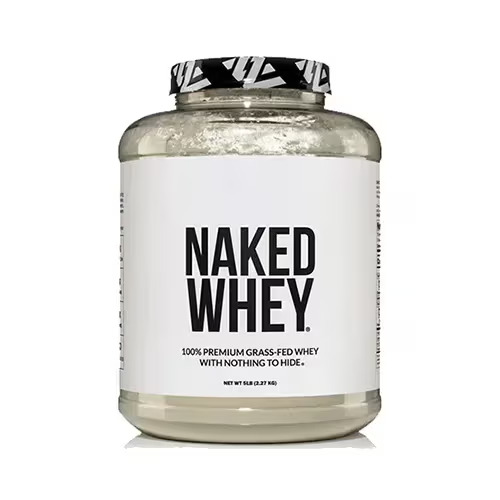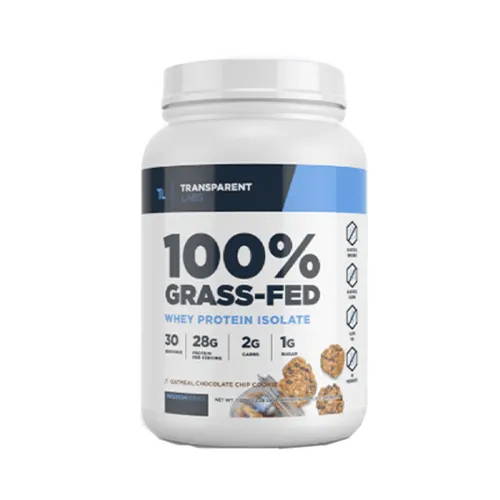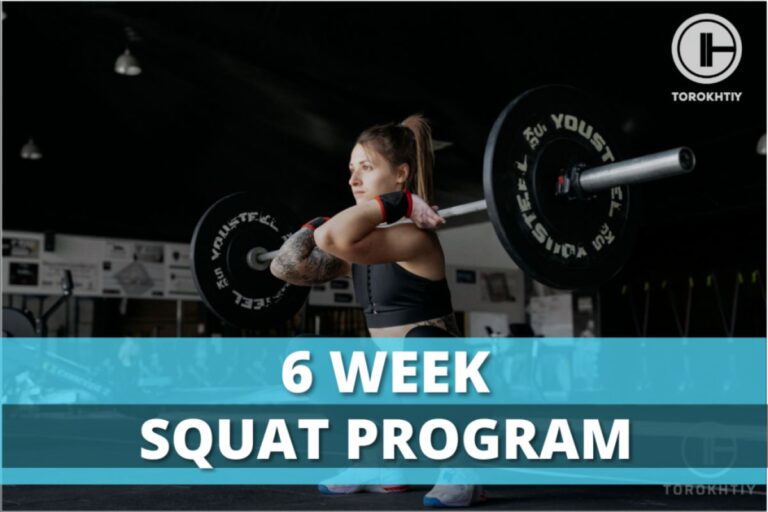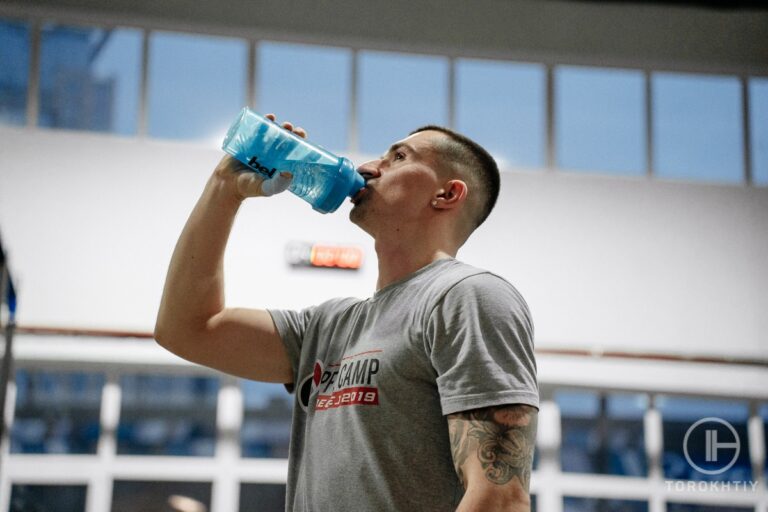Protein Shake With Milk or Water: Detailed Comparison
One of the best protein shakes to drink is protein shake with milk or water. Milk is ideal if your goal is to build muscle mass. In fact, milk may have at least the same muscle-building potential as whey powder in supplement form, provided the same amount of protein. However, mixing a shake with water also has its advantages in certain situations.
Are you contemplating between water and milk for your protein shakes? Then you should read on to find out the different benefits of using milk or water in your protein shakes. This article is to help you decide between using milk or water for your protein shakes.
Making your protein shake with milk or water depends on your dietary needs, taste preferences and gastrointestinal tolerability. Milk provides additional protein and micronutrients like vitamin D and calcium. Water, on the other hand, is a better option if you’re trying to cut back on calories and lactose.

Can You Mix Protein Shake with Milk?
Of course! Adding milk to your protein shake is a great choice. Since milk contains vitamins and minerals, including vitamin D and calcium, it might actually be a great addition to your protein shake. Furthermore, milk can improve the flavour of your shake.
However, keep in mind that milk contains protein, carbohydrates, and fat (with the exception of skim milk, which contains almost zero fat), while water contains none of these. Therefore, if you want to add a serving of protein without additional carbohydrates and fats, water will be a better choice. Ultimately, it’s up to you and your dietary requirements.
Can You Mix Protein Shake with Water?
Another excellent choice is to add water to your protein shake. If you’re looking to reduce the number of calories you consume, water is an excellent choice because it has no macros and calories. The consistency of the shake may be a little more watery, but if that’s okay with you, then there’s no problem with that. It all comes down to individual preferences and goals. You can add ½ cup of berries or ½ cup of juice if you don’t enjoy the taste of shake with water. In this way, you can improve the taste and aroma, while adding a small amount of carbohydrates. So go ahead and give it a shot; you might find that you like it more than you expected.
Protein Shake with Milk or Water
Below are some factors to consider when choosing between milk and water:
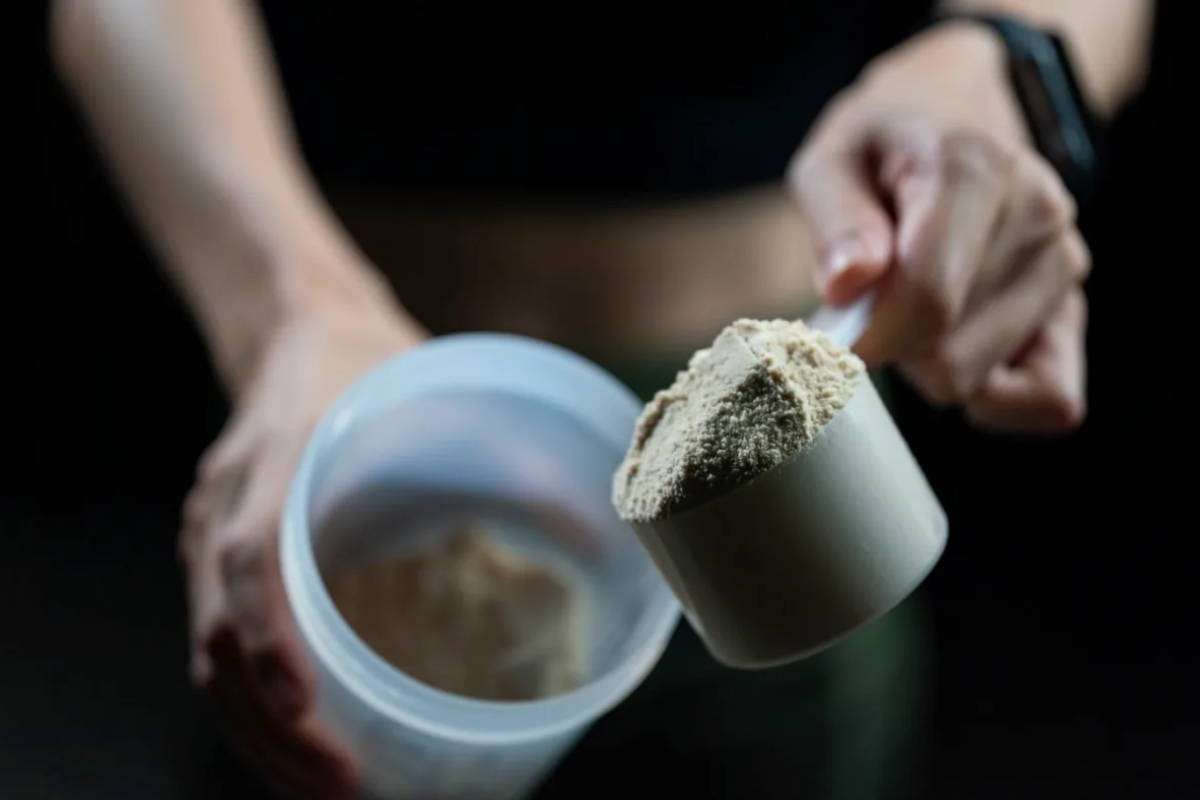
1. Calories
Both milk and water offer perks and cons when it comes to blending your protein shake. Let’s examine how they differ in terms of calories in more detail.
There are more calories in a protein shake with milk than calories in a protein shake with water. As already mentioned, unlike water, milk contains proteins, fats and carbohydrates.
While a cup of water has no calories, a cup of whole milk has roughly 150 calories. Water is a great choice if you’re attempting to watch your calories. However, milk can be a terrific option if you don’t mind the extra calories and you’re seeking a creamy and delicious shake.
Finally, your overall macronutrients requirements and personal preferences will determine whether you mix your protein shake with milk or water. Water is the ideal option if you’re trying to reduce your calorie intake, while milk is a perfect choice if you want to boost your shake’s energy density, nutritional value and creaminess.
2. Carb Content
The amount of carbohydrates in milk is high compared to the zero carbohydrates in water; a cup of whole or skim milk normally has 12 grams of carbohydrates, whereas water has none. Water is obviously the best beverage choice if you’re seeking to reduce your carbohydrate intake while increasing protein. However, milk can be a fantastic option if your carb needs are high enough. For example, in the conditions of a hypercaloric diet, when we gain muscle mass, additional carbohydrates will have an advantage.
3. Fat Content
Depending on the fat content, a cup of milk can have 0.2 grams of fat (for skim milk), 2.3 grams of fat (for low-fat milk), and almost 8 grams of fat for whole milk. Along with this, milk is a better option if you’re going for a creamy, delicious shake.
On the other hand, water can be a better choice for those who are trying to keep an eye on overall fat consumption.
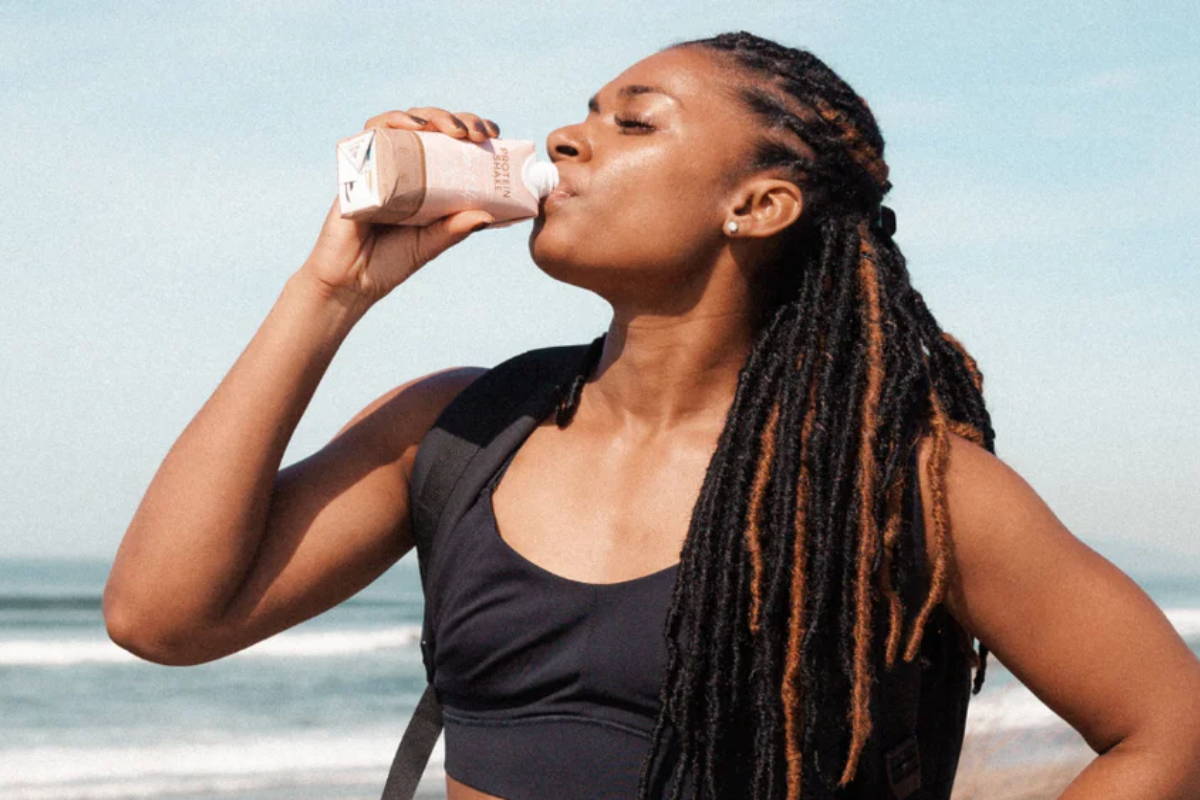
4. Protein Content
This is where using milk for your protein shake really shines because milk contains protein and water contains none. If you love milk, this is great for you. A cup of milk contains 8-8.5 grams of protein, while water has none. If you’re trying to increase your protein intake, then you should definitely mix your protein shakes with milk. On the other hand, if you do not want to add more protein to your shake or you are worried about the other components of milk, then you should stick with water.
You can also mix the shake with water and milk at the same time, for example, in a ratio of 50 / 50. This way you can add more protein without significantly increasing the total calories.
Overall, the protein content of a protein shake can be significantly impacted by the choice between milk and water. Milk offers an additional serving of protein, more sustained release of amino acids and has a better satiating effect.
5. Micronutrients
This is another aspect where milk has the edge over water. Milk contains a rich variety of micronutrients, especially calcium, potassium, vitamin D, vitamin A as well as group B vitamins, especially B1, B2, B6 and B12. So you get several nutritional benefits when you use milk to mix your protein shake.
Water, on the other hand, is almost micronutrient-free. Even though water is a good option for hydration, it doesn’t provide micronutrients except for trace amounts of some minerals such as calcium and magnesium.
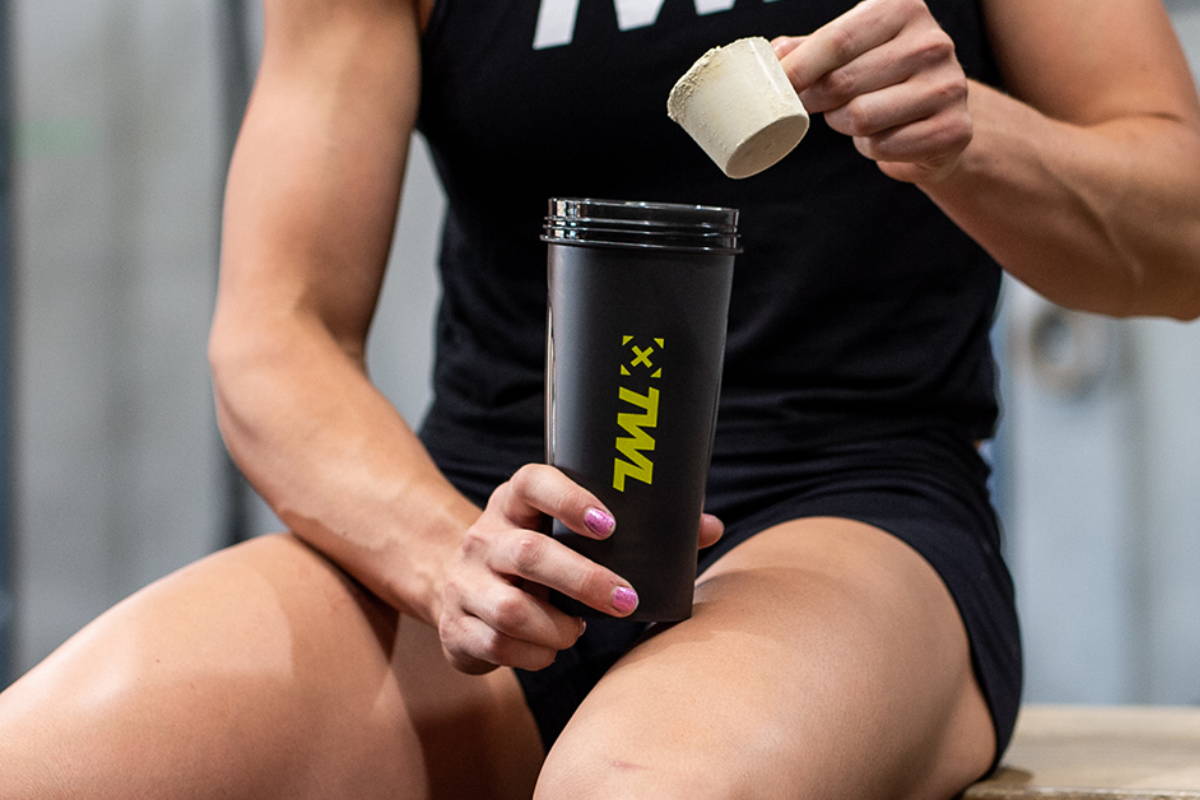
6. Texture
Water or milk in protein shake influence the texture. Your protein shake can have a creamier, richer texture thanks to the milk. This can increase the satiety of the shake while also masking unpleasant protein powder flavours. The shake can also be made to taste sweeter and more appetising by adding milk.
Contrarily, adding water will result in a thinner, waterier texture (depending on the quantity of water you add) for your protein shake. This can make the shake more enticing and easy to consume, particularly on warm days or after exercise. Water also won’t increase the calorie count in your shake, which makes it a perfect choice if you’re attempting to lose weight.
However, you can still influence the texture of the shake even if you only use water. Just add less water than usual. Experiment to find your perfect volume of water.
7. Taste
Your protein smoothie will taste creamier if you add milk to it. This can make the shake more appealing by muffling any off flavours from the protein powder. In addition, milk can give your shake a rich, creamy flavour that will increase its satisfaction and satiety.
Water, on the other hand, won’t give your protein shake any additional flavour. If you want to preserve the flavour of your protein powder, this is a wonderful alternative. In addition, adding water might make the shake more consumable, especially on warm days or after exercise.
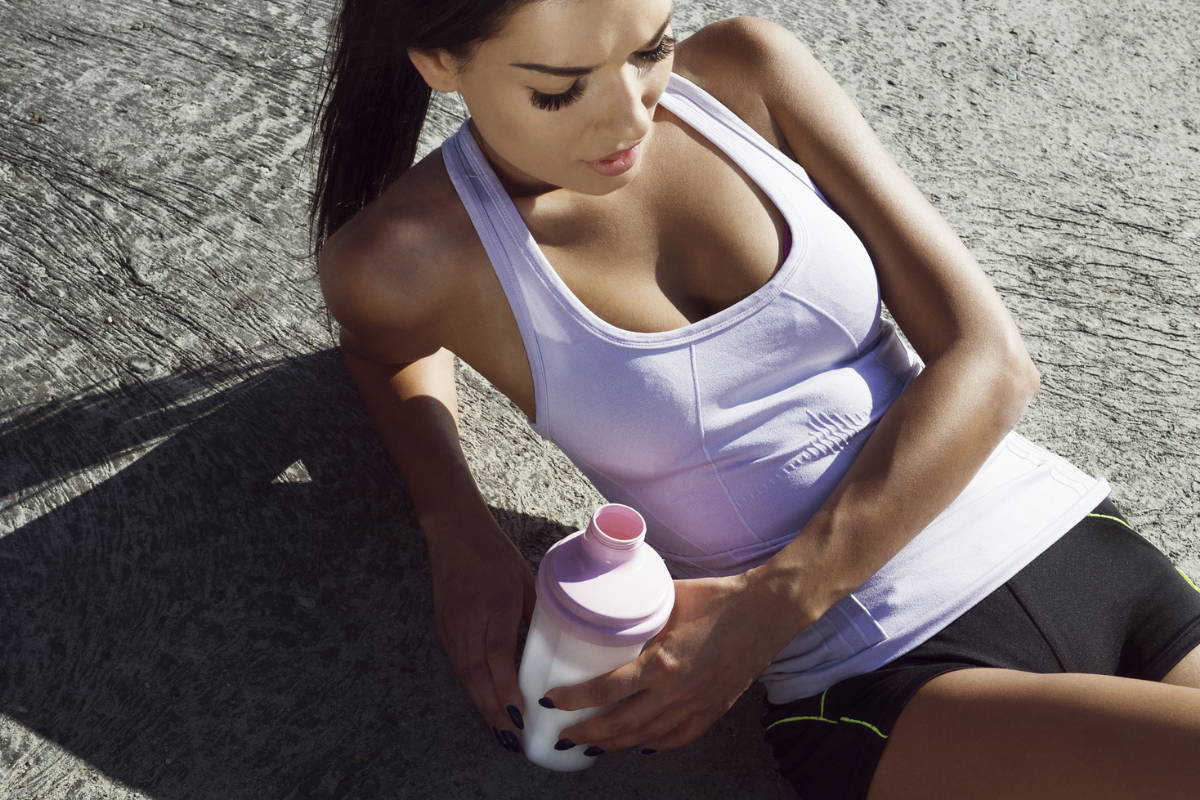
8. Allergies and / or Intolerances
Allergies to milk proteins can be a factor to consider when choosing between milk and water. Milk allergy is an immune reaction to one or more proteins found in milk, specifically casein or whey. Symptoms of milk allergy can range from mild, such as hives or stomach upset, to severe, such as anaphylaxis, a life-threatening reaction that impairs breathing.
If you suspect that you or a loved one has a milk allergy, it is important to consult with a healthcare professional for proper diagnosis and treatment. The healthcare professional may recommend an elimination diet to confirm the diagnosis, and a treatment plan that may include avoiding milk and milk products.
Another factor to consider, even if you do not have an allergy to milk proteins, is lactose intolerance. If a shake with water does not cause digestion problems, and a shake with milk does, then the second option is not suitable for you. In this situation you can use water, plant-based milk or lactose-free animal milk.
9. Cost
Cost can be a factor to consider when choosing milk or water for protein shake as a liquid base. If you live in a region or city where it is safe to drink regular tap water, then water in your case is a free liquid base for a protein shake. This can be an important consideration if you are on the budget.
Also, depending on the brand and its specific product, you can choose more affordable options, including plant-based milk to reduce the cost of the protein shake while still incorporating the nutritional benefits of milk. Ultimately, the cost factor will depend on individual financial circumstances and priorities.
Protein Shake with Milk or Water: Summary
A popular and practical way to enhance your daily protein consumption is by drinking protein shakes. Both milk and water can be used to make them, and each has its own advantages.
You add another source of protein and calories when you add milk to a protein shake. With about 8-8.5 grams of protein per cup, milk is a good additional source of protein. At the same time, it is worth taking into account the additional fats for whole milk and low-fat milk, as well as carbohydrates, which are in milk of any fat content. As a result, protein shakes made with milk will have more protein, carbs, fats (if non-skimmed milk is used) and calories than shakes made solely with water. This can be an advantage on a hypercaloric diet, but a disadvantage on a hypocaloric diet.

On the other hand, a great way to increase protein in your overall diet, but minimising additional carbs and fats in your protein shake is to make it with water. Those who are attempting to shed pounds or maintain a calorie deficit can benefit from this. Adding water will also thin out the shake and can make it easier to drink on hot days. Overall, mixing protein powder with water is the perfect way to add a concentrated source of protein with low calorie density.
In conclusion, the choice of whether to prepare your protein powder in water or milk depends on your macronutrients and calories goals, personal preferences and gut tolerability. While a shake prepared with water will have fewer calories, one made with milk will have more protein.
Pros And Cons of Protein Shake with Milk
Positives:
Could be better:
Pros And Cons of Protein Shake with Water
Positives:
Could be better:
Protein Shake with Milk and Water: When to Use Each

1. When to Make Protein Shake with Milk?
You should use milk with your protein shake if you’re looking to increase your protein intake, and support muscle recovery and growth. If you’re also looking to make your protein shake in a way that it’s more filling and satisfying, it is better to use milk. Milk with protein powder should also be used when you’re looking for a tasty protein shake.
2. When to Make Protein Shake with Water?
Use water if you’re trying to lose weight. Water is fat-, carbs- and calorie-free, hence it’s a good option for those looking to control their calorie intake. You should also use water when you’re looking for a more budget-friendly shake.
Products We Recommend
Now that we’ve talked all about Protein Shakes and what their pros & cons are let us recommend you the best protein supplements in our opinion.
1. Naked Grass Fed Whey Protein Powder
Naked Whey is a great protein powder you can use with milk as it contains no sweeteners or flavour enhancers. Therefore, adding milk will make the taste of such a shake more appealing. However, be aware that this product may not be suitable for people with lactose intolerance, because whey protein concentrate contains milk sugar.
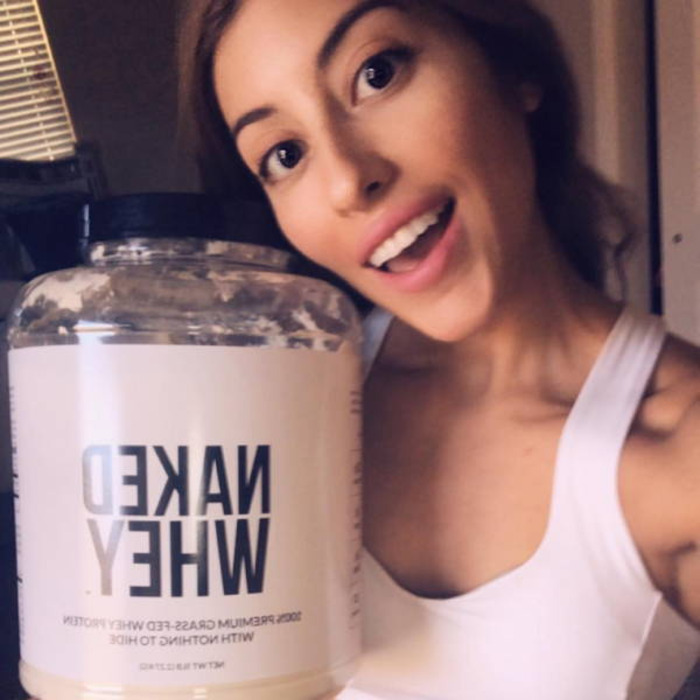
Key benefits of this product include:
- Made with only one ingredient: whey protein concentrate, and nothing else
- Excellent protein-by-weight ratio, as protein makes up 83% of the total weight of a serving
- High BCAA and leucine content
- Very low sodium per serving
- Certified by Informed Choice
- Low price per serving
One serving contains 25 grams of highest quality protein, 2 grams of fat and 3 grams of carbs. Overall, Naked Whey is a perfect choice for people who do not have problems with lactose!
2. Transparent Labs Grass-Fed Whey Protein Isolate
Whey protein Isolate from Transparent Labs is another great protein powder product that we highly recommend; you can take this product powder with water. It is made from 100% grass fed American cows. This is one of the cleanest protein products in the market and a great buy if you’re looking to build muscle or lose weight.
Key product features:
- 28 grams of protein per serving
- Even more BCAA and leucine
- Only 0-1 grams of fat per serving (depending on flavour)
- Better suits for lactose intolerant people
- Score A at Labdoor ranking (tested for heavy metals)
- 8 flavours to choose from
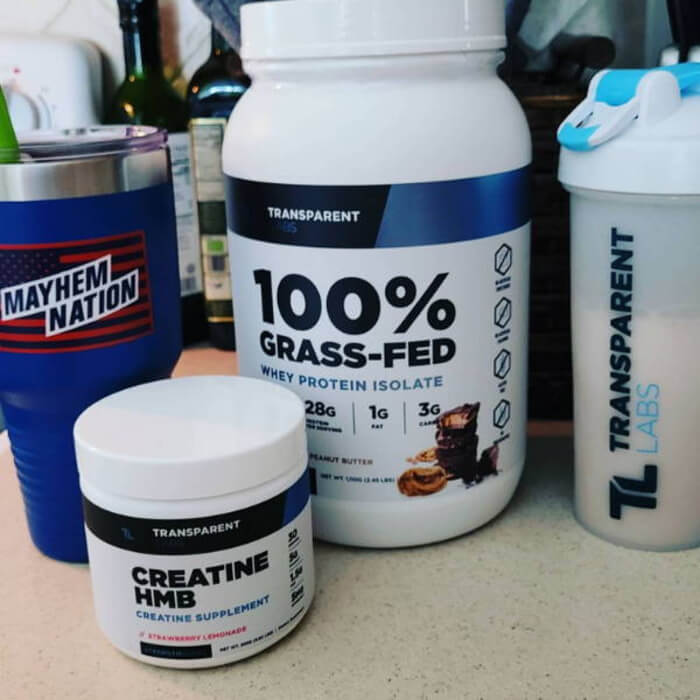
Overall, this is an excellent protein which is suitable both for people with lactose intolerance and for those who do not have problems with milk sugar!
FAQ
Can You Make A Protein Shake With Water?
Yes, you can. Simply add water and a serving of the protein powder to a blender, close the lid and press the button. If you’re using a shaker bottle, add water first, then add protein powder and shake until the mixture is smooth and there are no powder lumps.
Is Protein Powder Better With Water Or Milk?
Both water and milk are great options for a liquid base for your protein powder.
Conclusion
Protein shakes can be made either with milk or water as the liquid base. Which one of these is a better option depends on your dietary needs, personal preferences and gastrointestinal tolerability. You can make a delicious and healthy protein shake using either milk or water with protein powder.
If you have any questions that weren’t covered in this guide, feel free to share your thoughts in the comment section. We are more than happy to hear what you think and answer any questions you might have.
Also read:
- Muscle Milk vs Whey Protein
- Milk Protein vs Whey Protein
- Diarrhea From Protein Shake
- Pea Protein vs Hemp Protein
- Protein Powder or Protein Shake
- Hemp or Whey Protein
- Can You Mix Protein Powder With Creatine
- What to Mix Protein Powder With
- Vegan vs Whey Protein
References:
- Cameron J Mitchell, Robin A McGregor, Randall F D’Souza “Consumption of Milk Protein or Whey Protein Results in a Similar Increase in Muscle Protein Synthesis in Middle Aged Men” Nutrients. 2015 Oct 21;7(10):8685-99e https://pubmed.ncbi.nlm.nih.gov /26506377/
- “Milk” The President and Fellows of Harvard College July 2021 https://www.hsph.harvard.edu /nutritionsource/milk/
- Brianna “Can You Make A Protein Shake With Hot Water?” We Are Eaton September 5, 2022 https://www.weareeaton.com/can-you-make-a-protein-shake-with-hot-water/
- Thomas Ling “11 of the Most Common Protein Shake Mistakes” Men’s Health 22 February 2023 https://www.menshealth.com /uk/nutrition/a755033/the-8-most-common-protein-shake-mistakes/
- Valeria Polzonetti, Stefania Pucciarelli, Silvia Vincenzetti “Dietary Intake of Vitamin D from Dairy Products Reduces the Risk of Osteoporosis” Nutrients. 2020 Jun; 12(6): 1743. https://www.ncbi.nlm.nih.gov/pmc /articles/PMC7353177/
- Sanaz Mehrabani, Seyyed Morteza Safavi, Sepideh Mehrabani “Effects of low-fat milk consumption at breakfast on satiety and short-term energy intake in 10- to 12-year-old obese boys” Eur J Nutr. 2016 Jun;55(4):1389-96. https://pubmed.ncbi.nlm.nih.gov/26099369/
- Christopher W. Edwards; Mohammad A. Younus “Cow Milk Allergy” National Library of Medicine June 26, 2023.
Why Trust Us?
With over 20 years in Olympic Weightlifting, our team does its best to provide the audience with ultimate support and meet the needs and requirements of advanced athletes and professional lifters, as well as people who strive to open new opportunities and develop their physical capabilities with us.
By trusting the recommendations of our certified experts in coaching, nutrition, dietology, and sports training programming, as well as scientific consultants, and physiotherapists, we provide you with thorough, well-considered, and scientifically proven content. All the information given in the articles concerning workout programming, separate exercises, and athletic performance, in general, is based on verified data. We ensure that you can rely on our professionals’ pieces of advice and recommendations that can be treated as personalized ones which will benefit you and fully meet your needs.
The product testing process is described in more detail here
Author: Oleksandr Maksymenko
Certified Sports Nutritionist,
MSc Sports Dietetics
Specializing in: Weight management, Fitness / Sports nutrition
Oleksandr is a professional fitness nutritionist certified by the Fitness Professional Association (FPA). He follows the principles of evidence-based dietetics and fosters a healthy relationship with food in his clients, ensuring there are no strict prohibitions on their favorite foods or frequent lapses. His primary goal is not only to achieve results for you but also to sustain them over the long term, all while enjoying tasty and delicious food.

